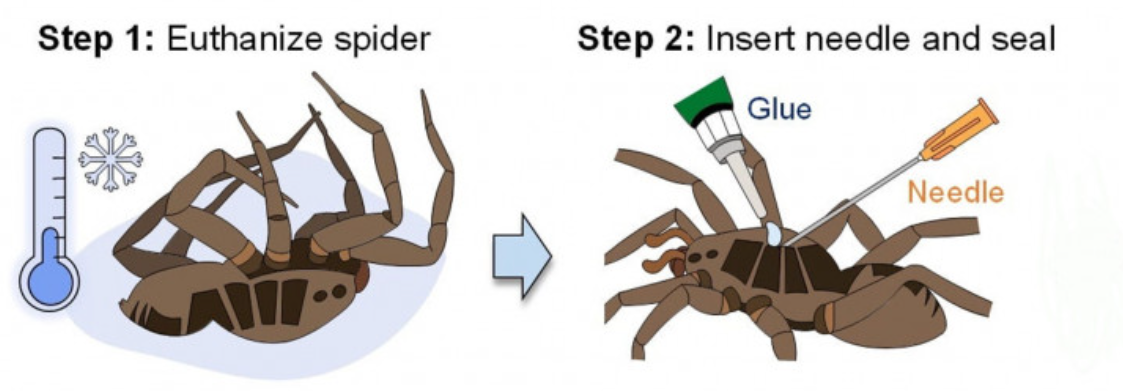Marie Donlon | July 27, 2022
A team of researchers from Rice University have transformed the legs of a dead spider into robotic grippers.
To further the area of research called necrobiotics, the researchers attempted to mimic the flexor muscles of the wolf spider, which enable spider legs to extend outward via hydraulic pressure. The spider’s prosoma chamber contracts and sends inner body fluid to its legs, thereby extending them outward. Once the spider is deceased, the legs curl inward because the spider has lost the ability to pressurize its body, the researchers explained.
 Source: Rice University
Source: Rice University
To turn the dead spider into a robotic gripper, the team inserted a needle into its prosoma chamber. Once inserted, a seal was created around the tip of the needle using superglue. Once sealed, the researchers pumped a tiny amount of air through the syringe, thereby activating the spider’s legs almost immediately.
In the lab, the researchers demonstrated that deceased wolf spiders could be turned into grippers for manipulating objects like a circuit boards and even another spider. Likewise, the researchers discovered that the deceased spider could be used to lift more than 130% of its own body weight.
The researchers suggest that these findings could lead to advancements in picking and placing tasks as well as sorting and moving tasks.
To see how researchers reanimated dead spider legs, watch the accompanying video that appears courtesy of Rice University.
The study, Necrobotics: Biotic Materials as Ready-to-Use Actuators, appears in the journal Advanced Science.
